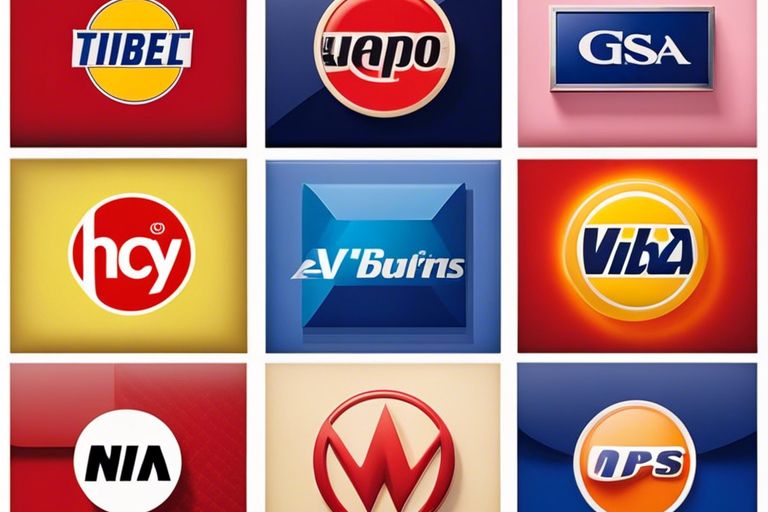Over the years, advertising has evolved into a sophisticated art form that goes beyond mere selling. Semiotics, the study of signs and symbols, plays a crucial role in creating ads that resonate and linger in the minds of consumers. By tapping into the cultural meanings and associations attached to these signs, advertisers can craft messages that trigger emotional responses and establish powerful connections with their target audience. In this blog post, we examine into the significance of semiotics in advertising and explore how this discipline contributes to the creation of truly memorable ads.
Key Takeaways:
- Semiotics plays a crucial role in creating memorable ads: By using signs, symbols, and meanings, semiotics helps ads communicate messages effectively to consumers.
- Understanding cultural context is important: Semiotics helps advertisers create ads that resonate with a specific culture or society, making them more memorable and impactful.
- Emotional connections can be heightened through semiotics: By tapping into human emotions and deep-seated cultural symbols, semiotics can create ads that leave a lasting impression on the audience.
1. Semiotics uses signs/symbols to convey meaning in advertising.
2. Helps evoke emotions and create strong brand associations.
3. Helps ads stand out and be more memorable.
4. Shapes consumer perceptions and interpretations.
5. Enhances storytelling and adds depth to ad messages.
6. Connects ad content to cultural meanings and values.
The Basics of Semiotic Theory
There’s a fascinating world behind the creation of memorable ads, and at its core lies the theory of semiotics. Semiotics is the study of signs and symbols and their meanings and uses in communication. In advertising, understanding the basics of semiotic theory is important for crafting impactful and unforgettable campaigns.
Signifiers and Signified
Signifiers are the physical form of a sign, such as words, images, or sounds, that convey meaning. In contrast, the signified is the concept or idea represented by the signifier. For example, a red heart shape (signifier) in an ad might represent love or passion (signified). The relationship between signifiers and signifieds forms the basis of semiotic analysis in ads, where every visual element or word is carefully selected to evoke specific meanings and emotions.
For a deeper understanding of the relationship between signifiers and signifieds, it is important to consider the context in which they are used. The same signifier can have different meanings depending on the cultural, social, or historical context in which it appears. Advertisers must be mindful of these nuances to ensure their messages are correctly interpreted by their target audience.
Codes and Conventions in Semiotics
Codes and conventions in semiotics refer to the systems of rules and standards that govern the use of signs and symbols in communication. These codes can be visual, verbal, or gestural and are crucial for creating coherence and consistency in ads. Conventions, on the other hand, are the widely accepted practices or norms within a particular culture or industry.
Semiotics in Visual Advertising
Once again, the role of semiotics in creating memorable ads cannot be understated. Semiotics, the study of signs and symbols, plays a crucial role in visual advertising by helping marketers convey messages that resonate with their target audiences on a deeper level. By understanding the meanings behind signs, symbols, and images, advertisers can create compelling visuals that evoke emotions, thoughts, and associations in consumers.
Use of Images and Symbols
With the use of images and symbols, advertisers can communicate complex ideas and concepts in a simple and effective manner. Whether it’s using a logo to represent a brand or a visual metaphor to convey a message, images and symbols are powerful tools in visual advertising. For example, the Apple logo is instantly recognizable and evokes associations of innovation, simplicity, and premium quality, all of which contribute to the brand’s identity and appeal to consumers.
Color Semiotics and Brand Recognition
Semiotics plays a critical role in color selection for brands seeking to create strong visual identities. Colors have intrinsic meanings and can evoke specific emotions and associations in viewers. In advertising, color semiotics is used strategically to enhance brand recognition, establish brand personality, and create a cohesive visual identity across campaigns and communication channels.
Advertising campaigns often leverage color semiotics to evoke desired responses from consumers. For instance, red is commonly associated with passion, energy, and excitement, making it a popular choice for brands looking to create a sense of urgency or create a bold statement. Understanding the nuanced meanings of colors allows advertisers to craft visuals that resonate with their target audience and effectively communicate brand values and messages.
Semiotics in Textual Advertising
The Power of Language and Copywriting
After visuals, the next crucial element in textual advertising is the language used in the ad copy. The power of language cannot be understated when it comes to creating memorable ads. The choice of words, tone, and style all play a significant role in evoking the desired emotional responses from the audience.
For advertisers, crafting compelling copy is an art form. By understanding the semiotic implications of different words and phrases, they can strategically communicate brand messages and values. Moreover, copywriting involves not just conveying information but also creating a connection with the audience that resonates long after the ad is seen or heard.
Typography and Its Semiotic Implications
Typography plays a crucial role in textual advertising, influencing how the audience perceives the message being conveyed. The font style, size, and spacing all contribute to the overall visual impact of the ad. Each typographical element can evoke different emotions and associations, shaping the viewer’s interpretation of the ad.
Typography is a powerful tool that can enhance the effectiveness of an ad by creating a visual hierarchy and guiding the viewer’s attention. Different fonts can convey different meanings – from elegance to playfulness, from seriousness to creativity. Understanding the semiotic implications of typography can help advertisers make strategic choices that align with their branding and messaging goals.
Language and typography are fundamental components of textual advertising, working in tandem to create a cohesive and impactful message. By carefully selecting the right words and fonts, advertisers can craft ads that not only grab attention but also leave a lasting impression on the audience.
The Role of Cultural Context
Not only do semiotics help in creating memorable ads, but the cultural context in which these ads exist also plays a significant role. The interpretation of signs and symbols within an advertisement can vary greatly depending on the cultural background of the audience.
Understanding Cross-Cultural Semiotics
On a global scale, understanding cross-cultural semiotics is crucial for creating effective ads that resonate with diverse audiences. Different cultures may assign varying meanings to symbols, colors, or even gestures. For example, the color red symbolizes luck and prosperity in Chinese culture, while in Western cultures it can represent passion or danger.
It is important for advertisers to be aware of these cultural nuances to ensure that their messages are accurately interpreted by audiences from different cultural backgrounds. By understanding how semiotic elements are perceived across various cultures, advertisers can create ads that are not only memorable but also culturally sensitive and relevant.
Adapting Messages for Global Audiences
Cultural context plays a crucial role in adapting messages for global audiences. Advertisers must consider the cultural norms, values, and beliefs of different regions when creating ads for an international audience. This may involve adjusting the language used, tailoring the visuals, or even changing the overall message to better align with the cultural context of the target audience.

Creating Memorable Ads with Semiotics
To truly understand the impact semiotics can have on creating memorable ads, one must examine into symbols, signs, and meanings that shape our perception of the world. Semiotics, the study of signs and symbols and how they are used to convey meaning, plays a crucial role in advertising by influencing consumer behavior, creating emotional connections, and leaving a lasting impression.
Emotional Resonance through Semiotic Elements
Any successful advertising campaign relies on the ability to evoke emotions and connect with the audience on a deeper level. Semiotic elements such as colors, images, shapes, and even words can trigger specific emotions and associations in the minds of consumers. By tapping into these symbolic meanings, advertisers can create ads that resonate with their target market and leave a lasting impact.
Consistency and Innovation in Semiotic Strategies
Consistency in semiotic strategies is important for building brand recognition and establishing a strong identity in the minds of consumers. By consistently using certain symbols, colors, or motifs across different ads, brands can create a sense of familiarity and trust with their audience. However, innovation is also key to staying relevant and engaging consumers in a rapidly changing advertising landscape. By creatively incorporating new semiotic elements or reinterpreting existing ones, advertisers can capture attention and stand out in a crowded marketplace.
Final Words
With this in mind, it is evident that semiotics plays a significant role in creating memorable ads by effectively communicating messages through symbols, signs, and connotations. By understanding the cultural codes and associations tied to different signs, advertisers can craft campaigns that resonate with their target audience on a deeper level. Semiotics allows brands to tap into universal meanings and emotions, leading to impactful and memorable advertising that leaves a lasting impression on consumers. As we move forward in the ever-evolving landscape of marketing, the ability to harness the power of semiotics will continue to be a valuable tool in creating compelling and unforgettable advertisements.



